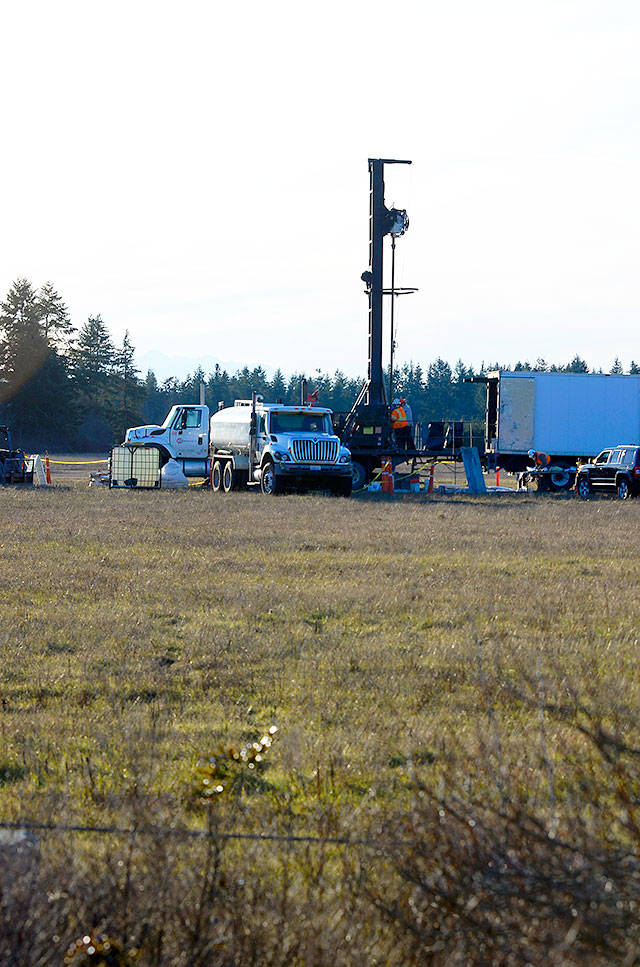The Navy is holding another round of public meetings to discuss results of on-base water testing at Outlying Field Coupeville and overall response to drinking water contamination on Whidbey Island.
The Navy drilled 27 test wells at OLF Coupeville earlier this year and tested water samples from the 25 that contained water.
Three wells had levels of the chemical perfluorooctanoic acid, or PFOA, that exceed the EPA’s lifetime health advisory of 70 parts per trillion.
The three wells tested at 166, 571 and 1,190 parts per trillion, according to Kendra Leibman, remedial project manager with Navy Facilities Engineering Command. The wells with the exceedances were centralized, she said, which appears to be consistent with potential releases on the runway.
The perfluoroalkyl substances the Navy is testing for are present in aqueous film forming foam, a highly effective fire suppressant that is used to put out aircraft fires — which is why they are sometimes found near runways.
The results of the OLF testing will be posted at the project website, http://go.usa.gov/xkMBc, next week.
The first open-house meeting is 5-7 p.m., Wednesday, May 31, at Hillcrest Elementary in Oak Harbor. The second is 5-7 p.m., Thursday, June 1, at Camp Casey in Central Whidbey.
Last November, the Navy started sampling wells within a one-mile radius of sites on Naval Air Station Whidbey Island’s Ault Field and the Outlying Field Coupeville. The impetus was the EPA’s decision last year to set a lifetime advisory level for the chemicals, followed by a directive from top Navy leaders that called for all Navy bases to look into the possibility that the chemicals had contaminated drinking water.
The Navy’s first priority is the health of citizens, said Dina Ginn, environmental restoration manager with Navy Facilities Engineering Command. The main focus so far has been on testing drinking-water wells and providing bottled water to people who have wells that exceed the advisory level.
So far, the Navy received 112 results from properties near OLF Coupeville and seven are above the advisory level. The Navy has 99 results from properties near Ault Field; two samples are above the advisory level.
Officials have started looking into longer-term solutions for people with contaminated wells. Possible options include hooking into public water supply from Oak Harbor or Coupeville, drilling new wells or installing granulated-activated-carbon filters in the homes, Liebman said.
It’s possible that the filters could be an interim solution until a long-term solution is found, she said. Officials will first have to evaluate the filters to determine how well they would work and long they would be effective.
The drilling of test wells on Navy property at OLF Coupeville is the beginning of a process to determine the source of the chemicals. The test results, Leibman said, point to the complexity of hydrogeology in the Central Whidbey area. Based on the limited results, it appears that there are perched water zones above a discontinuous acquifer.
More test wells will be drilled on the property. The results will allow scientists to create a plume map that shows the direction of the underground flow of the chemicals. That could show where the contamination originated and also point to where contamination will spread in the future, Leibman said.
The same process will be followed to investigate groundwater contamination around the Ault Field base on North Whidbey, officials said. It’s work that could take years.
“We’re in it for the long haul,” Ginn said.
“We’re going to be here until it’s done.”



